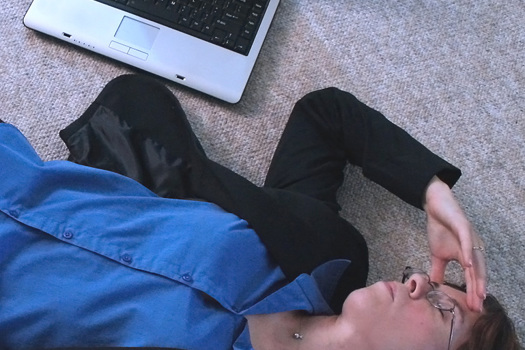When HR magazine asked Brighton-based e-learning agency Brightwave to raid its cupboards and unearth some classic e-learning of yesteryear, even CEO Lars Hyland was surprised at the stark differences: "Ironically, Video Discs (pre-CD ROM) were extremely professional because camcorders didn't exist. They were limited to allowing users to jump from clip to clip, but there was less distraction, and the copywriting was excellent. When the internet came along, it was cheaper, but bandwidth meant there was a big step back in quality; ROI was the watchword; it meant lots of needless quizzes and exercises to prove the training had been done, but often it was the most efficient solution, rather than the most effective."
According to Hyland, just because learning is 'e-learning', half of it is still "the wrong stuff, given to the wrong people, at the wrong time and in the wrong way". So what would his Brightwave archive reveal?
WHAT'S NEXT?
A peek at Brightwave's current projects signals just where e-learning has to be: much more business focused, and designed with users in mind. Business focus is a real imperative for IKEA. Without proper inventories, broken or lost products still regularly get listed as 'in stock', causing great irritation if customers have travelled a long way for products. This course tackles the problem with an immersive stockroom environment where users have to pick up clues themselves. But the real coup is that the course integrates the store's real stocking system - with full functional-ity - so staff can practise re-listing products as lost, broken or damaged.
For Sky usability and generating engagement is the main aim. Brightwave has developed pre-employment on-boarding training, designed to get new joiners excited about the brand. Visitors can watch up to 10 hours of Sky content, including a 'scroll video wall' of movie clips. Each time they log on, the home page is refreshed, and a 'days till you join' graphic counts down. Learners can take part in a leader board challenge with learning modules (including simulated customer calls, and how they would respond). They are given points for getting tasks 100% correct, and earn themselves a place on the board. Users can leave bookmarks to get them back to where they were if they log off. Feedback so far finds 93% of people who do the training, complete all of it.
HOW THEY COMPARE
THE 1990s
What: A major airline's 'ramp safety' training course
Method: CD ROM
What happens: As soon as it loads, a rather serious-sounding voice booms out; you can't turn it off, and it tells you to start the course. Embedded video clips are tiny and inelegantly positioned; there's not a lot to look at. A few 'drag and drop' exercises about how close you can stand to an engine pop up; it's very basic, with some comedy animation. Oh, and you can't rewind the audio if you miss something.
Lars Hyland says: "It was of its time, and within the technical limitations of what was possible. It was well written but maybe didn't push people's buttons."
Learning score: 6 out of 10
THE 2000s
What: Another airline 'ramp safety' course
Method: Online
What happens: Wow, what a difference. Full-screen, movie-style opening credits of a whirring aeroplane engine. Audio can be switched on/off; there's a glossary of terms users can click on if they need more explanation; everything is much shorter and snappier. Nice images, photo-story 'scenarios' give learning a more practicable feel; the games are better, relevant and work; good use of Flash. A menu bar indicates where you are on the course; 'spot the hazards' photos encourage more inquisitive style of problem-solving.
Lars Hyland says: "Text has been cut down to a minimum and users can even reset and do the quizzes again for more embedded learning."
Learning score: 7.5 out of 10









